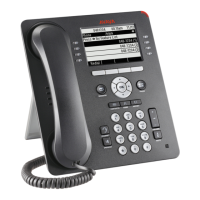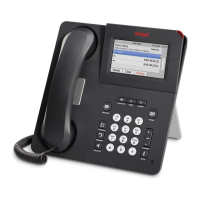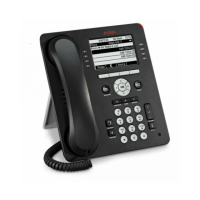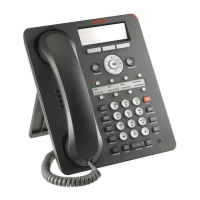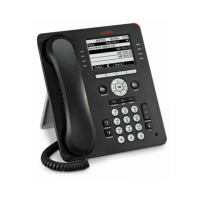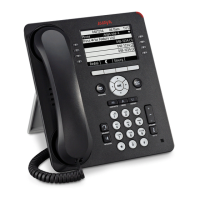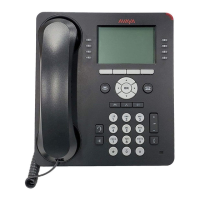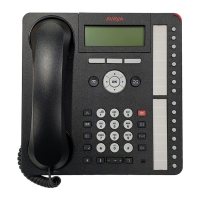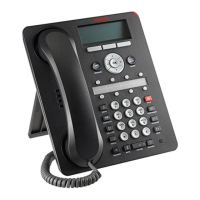Entering Data for Administrative Options
Issue 1 August 2010 33
value of each field is valid. The following actions cause the value of a given field to be
considered invalid:
●
Entering a digit that would cause the value of the first field of an IPv4 address to exceed
223.
●
Entering a digit that would cause the value of the last three fields of an IPv4 address to
exceed 255.
●
Entering a digit that would cause the value of any field of a subnet mask to exceed 255.
When entering an IPv6 address the dialpad uses numeric-only entry (single-tap for touchscreen
telephones, except for "2" and "3" which are alphanumeric (multi-tap for touchscreen
telephones). Pressing dialpad button "2" initially enters a "2", followed by "A", "B", "C", and back
to "2". Pressing dialpad button "3" initially enters a "3", followed by "D", "E", "F", and back to "3".
While the cursor is in any of the leftmost seven fields, pressing the "*" (asterisk) dialpad button
causes the value for the field being entered to be terminated (a zero is displayed if nothing else
is), a colon to be displayed in the space after the field, and the cursor to move to the next space.
Pressing "*" while the cursor is in the last (right most) field results in an error beep and the
cursor being left where it is. An IPv6 address is considered to be complete only if all the
following conditions are met:
●
All seven colons that separate the fields are entered OR the text input field contains at
most one pair of consecutive colons
●
If one pair of consecutive colons is present, the final field is not "1" or "01".
●
If one pair of consecutive colons is present, the address format is not "::FFFF:hhhh;hhhh".
●
The value of each field is valid. The following actions cause the value of a given field to be
considered invalid:
- Entering a digit that would cause the value of the first field of an IPv6 address to exceed
FD.
- Entering a third consecutive colon.
- Entering a second pair of consecutive colons.
In a given text entry field, if the either an IPv4 or an IPv6 address can be specified, the initial
field can be ambiguous with respect to whether the entry is an IPv4 or IPV6 address (for
example, "123" might be an IPv4 "123 decimal" or an IPv6 "0123 hex"). In such cases, text entry
follows the IPv6 rules that hexadecimal characters are allowed and the "*" key inserts a colon
character. If the entry is a hex character (A-F) or a fourth character is entered in the field, the
telephone assumes the input is IPv6 format. Otherwise, the telephone makes the initial validity
check when a field boundary (colon or decimal point) is entered. This initial typographic
character determines whether the overall address should be in IPv4 format (a decimal point is
entered) or in IPv6 format (a colon is entered). Once this character is entered, the telephone
examines the contents of the first field to ensure it is consistent with the field boundary (no hex
characters, and at most three characters of value 255 or less, in the first field if the field
boundary is a decimal point). If the first field contains any content inappropriate for the entered
field boundary, an error beep is generated and more content cannot be entered until the
contradiction in the text string is deleted, meaning either the field boundary is deleted or the

